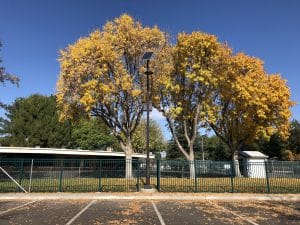Are Solar Street Lights Worth the Money? (Hint: Yes)Posted by Stephen Shickadance in The Basics.
We've all been a little nervous about making financial decisions that can either spell boon or doom. If you're looking to save money on purchasing solar street lights, we're aware of how you feel. Street lighting is not easy on the wallet, so if you make the wrong decision about lighting it can have lasting financial impacts. Some people are a little nervous about switching to solar for their lighting simply because it costs more upfront. We've heard a lot of similar remarks about the price of solar lighting. However, we're here to let you know that solar street lights are worth the money because they save corporations and cities several thousands of dollars upfront and over time. How? Read further. How Solar Street Lights are Worth the MoneyWe'll be transparent—on average, a solar light will cost you about a thousand dollars more for up-front purchase. That money goes towards the extra components such as the solar panel, solar battery, electrical management components, and other parts. However, the savings come in primarily from three factors:
How much? It depends on the nature of the project. Typically, solar lighting projects save about 20% off of the original price of traditional lighting. Some projects in the past have saved even more, sometimes going as high as 45% off of the original price. Here's how the factors add up: Energy BillsCosts will vary between HPS, Metal Halide, Mercury Vapor, and High-Pressure Sodium lights, but a safe average for all technologies is about 20 dollars a month to operate on fossil fuel power. Those costs can add up quickly, especially if you're running a system of several lights. With solar, there aren't pesky bills in the mail reminding you to pay for the power consumed. Your power is free. LED FixturesMetal halide, mercury vapor, and high-pressure sodium lights all have shorter lifespans than LED lights. Typically, LED fixtures will be coupled with solar panels (and batteries) for optimal energy usage. Here's a table showing the lifespan for different fixtures:
You'll replace LED lights less often than competing technologies and spend less as well. Trench Not, Waste NotWhen it comes to traditional grid-tie lighting, you'll need to purchase a lot more than just the street light. You need to purchase labor hours for digging and the entire electrical infrastructure. This is oftentimes more expensive than the light itself. How much more? 100 linear feet can cost on average 4,000 dollars. And that's if the soil in the area is ideal for digging. Some arid, rocky areas tend to have difficult soil to dig into and may require special equipment which can cost even more. It's not unheard of to see the cost of a linear foot for trenching to go as high as 200 dollars. Some digging equipment requires diamond-tipped accessories to get deeper into the soil in order to reach power connectivity. However, that's not the case with solar lights. There's no trenching required. "Set it and forget it." Some of our salespeople like to say "They just work." Trenching tends to be ugly; concrete or pavement is broken apart with noisy tools, the area is roped off and people are guided around it (not great for parks!), and then there are backfill fees to replace the trench. Then, depending on the area, that will need to be repaved over as well, and it never quite looks the same as it did. Solar street lights don't need a trench for power. You save time and money. That's one of the biggest reasons why solar street lights are worth the money—you save a lot of it. Permit PricesSometimes you'll need a permit to trench for power. Solar street lights are worth the money because you won't need to purchase permits which can range from 500 dollars to 2,000 or even more. It all depends on the project specifics and what obstacles are in the area. One project in Berkeley we provided solar lights on saved the customer over 90,000 dollars because they didn't need to spend the extra money on permits to trench under railroad tracks. Other projects with solar lighting have saved companies more than half of the original price they would have paid if they decided to trench for traditional lighting. Feel free to browse more success stories on solar lighting. So, you could either spend several thousand (in most cases) on the labor for trenching and the materials, or you could save that money and invest it somewhere else. Buy yourself a boat to hold a party. In ConclusionSolar street lighting is worth the money in comparison to traditional lighting because it saves corporations, businesses, and municipalities more money over time. You won't need to replace the LED fixtures as often, you save a lot of money on trenching, and don't need to worry about buying expensive permits. Solar lights are incredibly cheap and clean alternatives to traditional power. In fact, renewable sources have already demonstrated to be cheaper than fossil fuel options. If you'd like to alter your street lighting to solar, please contact us and our solar experts can give you a quote to see how much you'll save. Or, if you'd like to learn more about how solar lighting operates, feel free to download our solar lighting PDF that contains a wealth of new information. Thanks for reading.
The Basics
|
ArchivesNo Archives Categories
Want More Info? |
LATEST NEWS & ARTICLES
